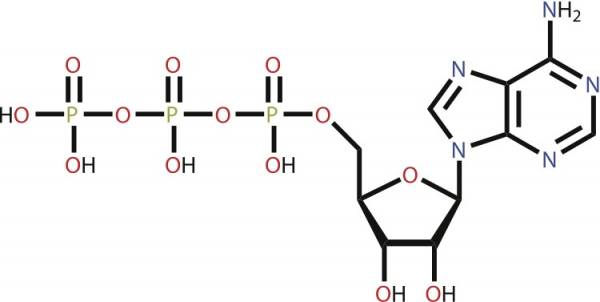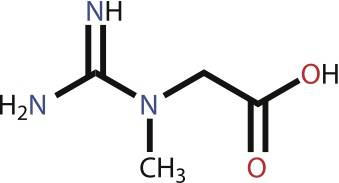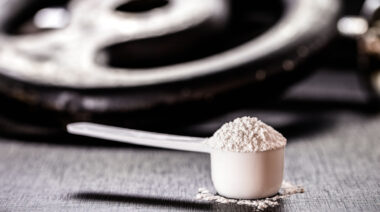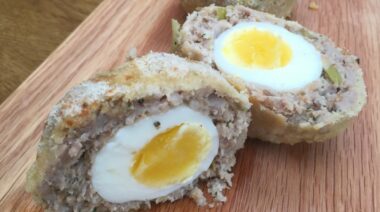Eating for performance has always been a hot topic in the realm of nutrition. The supplement industry is estimated to be worth roughly $23.7 billion. People are spending a lot of money on products that may not be delivering the results they are looking for. Taking a step back and understanding bioenergetics of the human body can go a long way to saving some money as well as increasing performance through real foods and appropriate supplementation.
Energy Systems
Bioenergetics by definition means the flow of energy in a biological system. In the human body it refers primarily to the conversion of carbohydrates, proteins, and fats into usable energy. The human body has three energy systems – the ATP/phosphocreatine system, glycolysis, and the oxidative cycle (also known as the citric acid cycle and Krebs cycle). The ATP-PC system and the first cycle of glycolysis, fast glycolysis, are anaerobic (a process that does not require oxygen). The second phase of glycolysis, slow glycolysis, and the oxidative system are aerobic. Only carbohydrates can be metabolized in both anaerobic and aerobic conditions.

The location of energy metabolism differs in these systems as well. The ATP–PC and fast glycolysis occur in the sarcoplasm of the muscle cell, while slow glycolysis and the oxidative system occur in the mitochondria. Energy in the sarcoplasm will be readily available, while metabolites that need to be put through the mitochondria will take a little longer. All three of these energy systems work at the same time, but one is more dominant than the other depending on the conditions of activity. The two biggest variables contributing to which system is dominant are the duration of the activity and the energy demand of the activity.

The ATP–PC system is the system that is active at the onset of all activities. This is our high energy and short-term energy system. This lasts for roughly the first ten seconds of all activity. The main source of energy in this system is ATP, adenosine triphosphate (pictured right). The ATP is made up of an adenosine molecule and three phosphates. Since energy cannot be created or destroyed, but only transformed, the enzyme ATPase breaks apart one of the covalent bonds between the adenosine and one of the phosphates releasing energy. Now we are left with ADP, adenosine diphosphate. The goal of the body now is to find another phosphate molecule to bond with the ADP so that we can generate more energy. This is where phosphocreatine comes into play.
Phosphocreatine can supply this phosphate group to the ADP. Creatine kinase is the enzyme that breaks apart the covalent bond between the creatine molecule and the phosphate and bonds it with ADP. We do not store large amounts of creatine phosphate in the body. This is where the supplementation of creatine came into the market. We only store roughly 80g to 100g of ATP in our body. This does not make it a significant energy source, but shows that it relies heavily on phosphocreatine to maintain the supply.
Creatine Supplementation
Creatine supplementation has been shown to increase muscle mass and strength. It does this by allowing a faster conversion of ADP to ATP as well as increasing the storage amounts of phosphocreatine. The research has shown creatine (pictured right) to be relatively safe as well. Creatine supplementation’s biggest mark may be on its positive effects on the neurological system. It is being used in research to help treat and prevent neurodegeneration with some great results.

There are some negative consequences to taking creatine. Some studies suggest that creatine supplementation suppresses our body’s ability to create our own creatine. This means that if we take creatine while we train and then remove it at some point our training will slide backwards. Anecdotally, I have seen this happen to a few of my clients.
The Importance of Carbohydrates and Protein
Remember that the ATP-PC system is anaerobic. This means that carbohydrates will be our primary fuel for this energy system. If you are doing heavy resistance training or sprinting there needs to be adequate amounts of carbohydrates in your diet. Having a diet that ensures all nutrient demands are met is also critically important. Choosing carb sources such as white potatoes, sweet potatoes, and yams are your best choices because they all have the glucose needed to supply energy as well as nutrients that are useful during the metabolizing of carbohydrates. Dr. Loren Cordain, author of The Paleo Diet for Athletes, recommends taking in .75g of carbohydrates per pound of bodyweight and this figure works well for more intense athletes.
Quality protein sources are also important. The amino acids found in protein are used to make the enzymes responsible for the breaking down of the covalent bonds. Also, meat, fish, and eggs are our best sources of creatine. The NSCA recommends 1.2g-1.8g of protein per kilogram of bodyweight and this value works for well for athletes. Remember these numbers for both carbs and protein are just ballpark numbers and may need to be adjusted for each individual’s needs.
So, if you are an athlete who takes part in heavy resistance training or heavy sprinting activities and performance is your goal, then make sure you are taking in enough carbohydrates from quality sources such as sweet potatoes, white potatoes, and yams as well as plenty of meat, fish, and eggs as they supply the amino acids to make key enzymes as well as to increase muscle mass.
In my next article we’ll dive deeper into glycolysis and the fuels utilized by that energy system.
References:
1. Cooper, Robert et al., Creatine Supplementation with Specific View to Exercise/Sports Performance: An Update. Journal of the International Society of Sports Nutrition (2012). Accessed on September 16, 2013.
2. Ferrante, Robert et al., Neuroprotective Effects of Creatine in a Transgenic Mouse Model of Huntington’s Disease. The Journal of Neuroscience (2000). Accessed on September 16, 2013.
3. Kreider, R.B. (1998). Creatine, the next ergogenic supplement? In: Sportscience Training & Technology. Internet Society for Sport Science.
Energy pathways chart property of Pulse Beat Fit.
Photos courtesy of Shutterstock.






